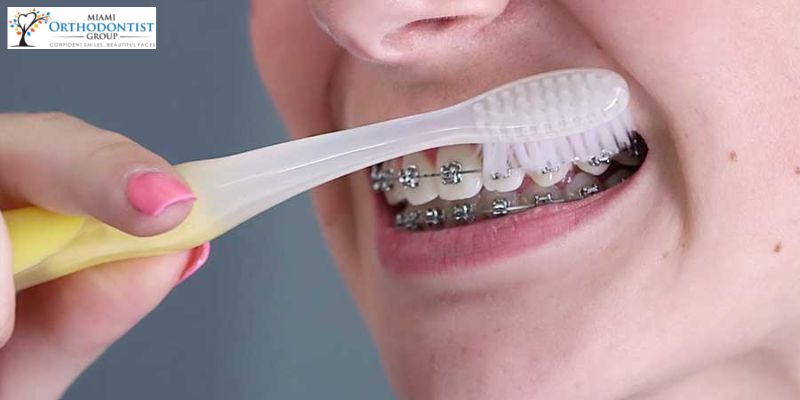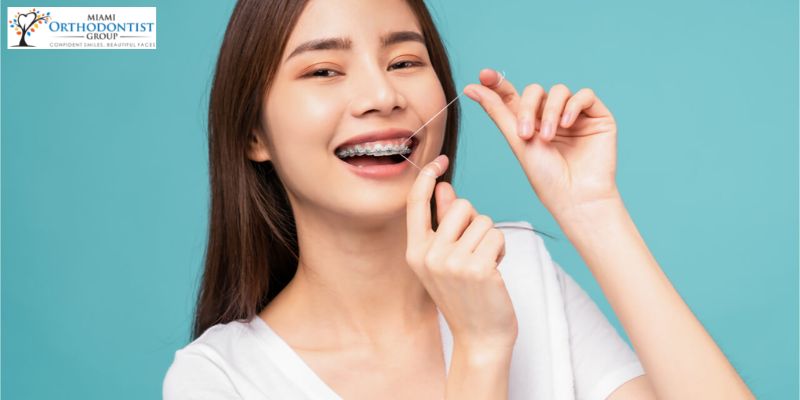When your gum suffers a buildup of excessive plaque, it leads to inflammation over time. People who do not carry out proper dental hygiene are susceptible to gum diseases. The accumulated plaque between the teeth and the gum line is also known as gingivitis, a painful disease that can lead to more severe periodontal problems.
However, people treating malocclusions to have beautiful smiles can also be at risk of gum diseases if they neglect proper teeth cleaning. Teeth cleaning can indeed be difficult, with wires and brackets holding your teeth together. But, to prevent gum problems during orthodontic treatment, there are healthy tips you must practice throughout your treatment process. To achieve a healthy and straight smile, the following tips can help:
1. Practice Frequent Teeth Brushing

The best way to prevent gum problems is through frequent teeth brushing and flossing. While you might think your braces can be a problem, you can brush gently to get rid of food particles, especially after meals. Even if your brushing feels different with orthodontic braces over your teeth, proper brushing can help you keep gum inflammation away.
The right way to brush your teeth is after eating food and before you go to bed. People wearing orthodontic braces can feel less challenged if they brush their teeth with soft bristle toothbrushes. When brushing your teeth, hold your brush at an angle of 45 degrees, and do not rush the process. Take as much time as possible until your teeth are clean.
If you brush hastily, you can damage your wires or brackets or even injure your gum. Most patients with orthodontic braces who do not follow proper teeth-brushing technique end up bleeding after every routine, or they avoid sending the toothbrush into certain angles of the dental brackets.
You should spend at least 2 minutes brushing your teeth and an additional 2 minutes if you consider flossing. You can purchase proxy toothbrushes with tiny single bristles, as they help you clean properly when wearing orthodontic braces. Also, you can opt for an electric toothbrush. They are easy to use, and they clean teeth properly.
2. Floss
Flossing is just as effective as brushing. It might take longer to floss, but you will save your teeth and gum from plaque buildup and gingivitis if you carry out this practice tirelessly. Flossing helps you get into tight areas between your teeth that your toothbrush did not reach. Your orthodontic specialist can recommend the best product for flossing, or you can get them over the counter at a drug store near you.
Some oral flossing products that can help you prevent gum inflammation during orthodontic treatment include:
3. Floss Threaders

If you are wearing orthodontic braces, orthodontic specialists have designed floss threaders to help you floss your teeth between brackets and wires, and you can floss up to your gum. Floss threaders look like big needles, but they are plastic-made substances that you can easily shove between your teeth and metal leaves wire and tooth.
4. Water Picks
Water picks can help you withstand inflammation and gingivitis and maintain good oral health. Water picks can irrigate tight corners between teeth and metal brackets. It uses force to remove dirt from areas in the teeth that are difficult to reach with a toothbrush.
5. Rinse
Rinsing might seem too simple to help you prevent gum problems, but every gum problem starts with accumulated debris formed on the teeth through the food you eat. Therefore, rinsing your teeth after a meal will help loosen trapped food bits around the wires and brackets.
It becomes more effective when you use the rinsing method and apply proper teeth brushing and flossing. You can gaggle with clean water, especially if you consume sugary drinks before bedtime. Your orthodontics can use recommended mouthwashes to get rid of gradually forming plaques that lead to inflammation of the gumline.
6. Avoid Eating Sticky and Hard Food Substances
Sticky and hard-to-bite food is not good for you when you have braces on your teeth. Those sticky food bits can travel into some spaces in your braces and hide there to accumulate problems. Orthodontists suggest that patients wearing braces, especially traditional types, should stay off gummy and hard foods as they can damage the braces and still cause tooth pain and decay.
If you wear clear aligners, you might not have these restrictions because you will need to take the trays off your mouth before eating and clean your teeth before putting them back on. If you chew nuts with your Invisalign, you should break it. If you must have your favorite hard food, such as nuts, grind them before consuming them to prevent ripping off the wires. But stay off sticky candies or other gummy treats.
7. Limit Sugary Drinks
The idea of wearing orthodontic braces is to help improve smiles. But, when you are on this treatment without paying attention to what goes into your mouth, you can obstruct the process without knowing. Most people consume substances that cause trauma to the teeth during orthodontic treatment.
Acidic and sugary drinks can wreak havoc on tooth enamel, and while you are undergoing orthodontic treatment, you can develop cavities. At the end of your treatment, you will not like to see a straight smile with heavy tartars forming on them or yellowy aligned teeth. Therefore, if you must have sugary drinks, rinse your teeth immediately, and if you can, avoid them completely as they are bad for your teeth
Conclusion
Due to poor oral care habits, people undergoing orthodontic treatment can have gum diseases, otherwise known as gingivitis. But, paying attention to better oral hygiene can help keep gingivitis away. You can start by brushing your teeth at least twice daily and flossing daily. Aside from brushing, flossing, and rinsing teeth to clear out accumulated debris on the teeth and braces, you should avoid eating some food and taking some drinks if they cause tooth decay or damage your braces.


